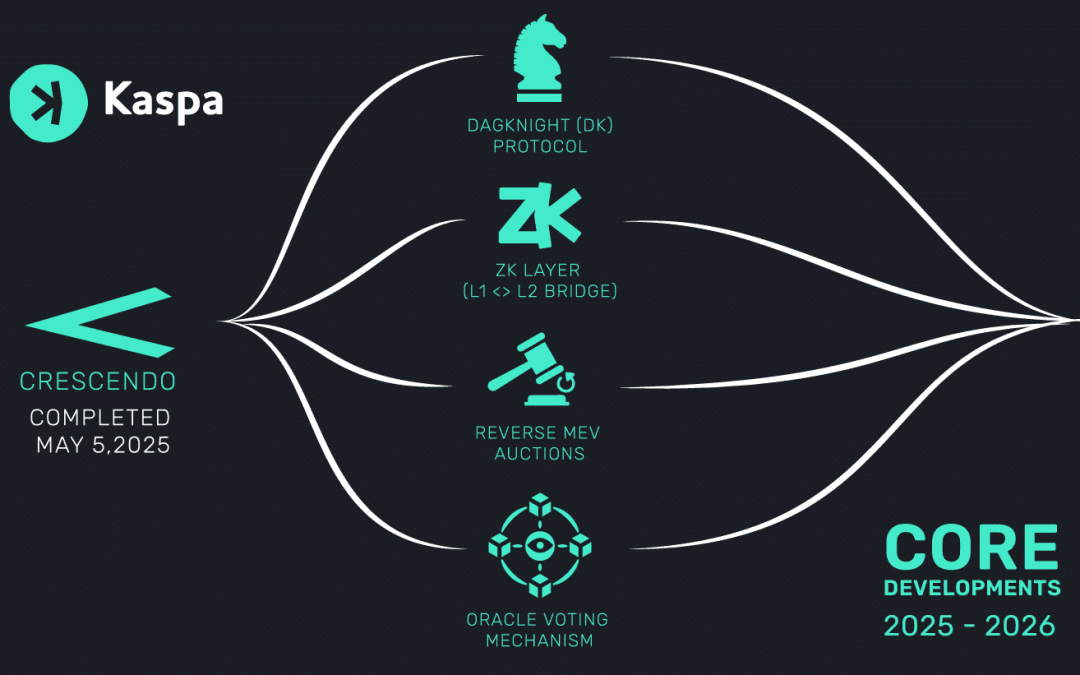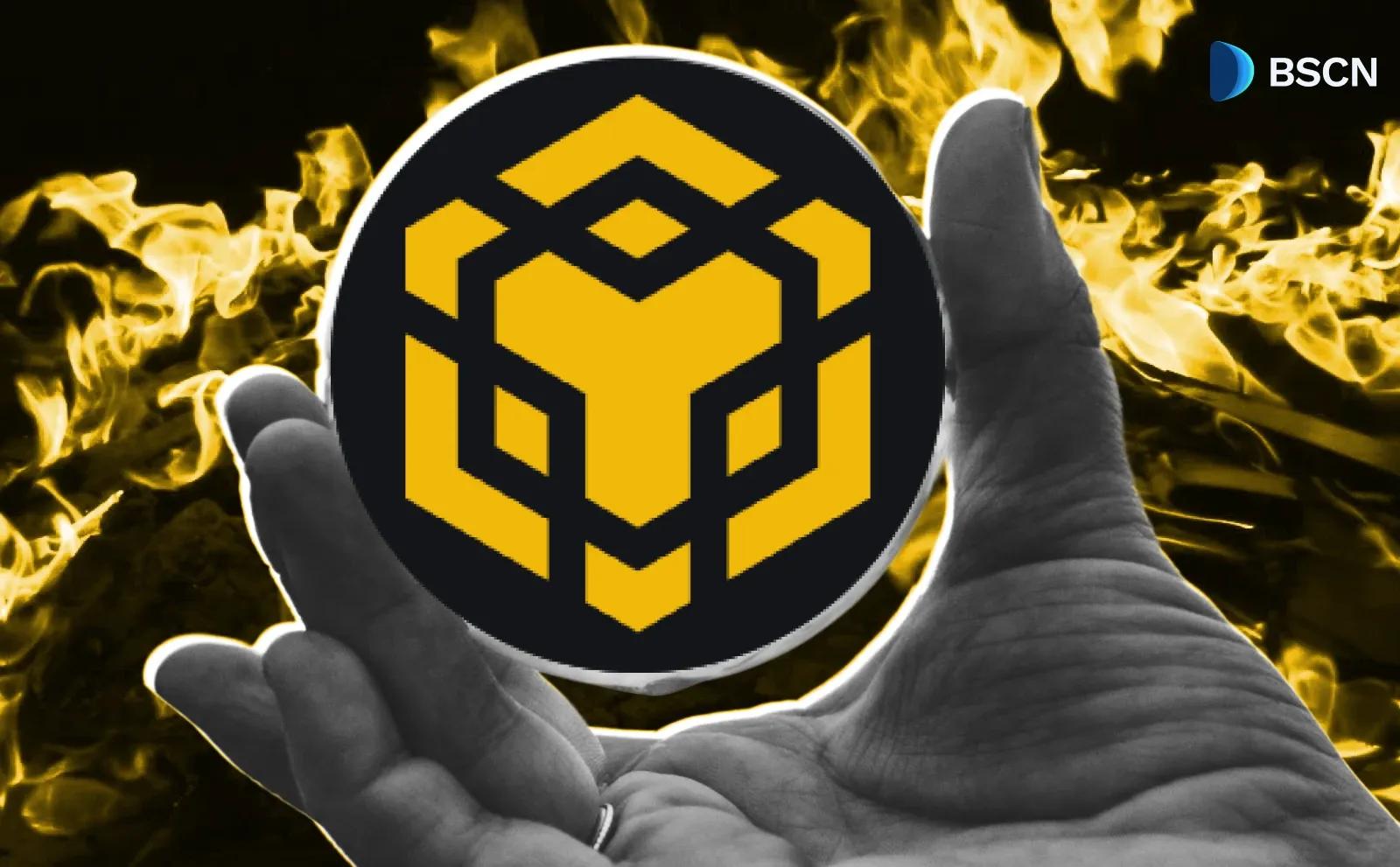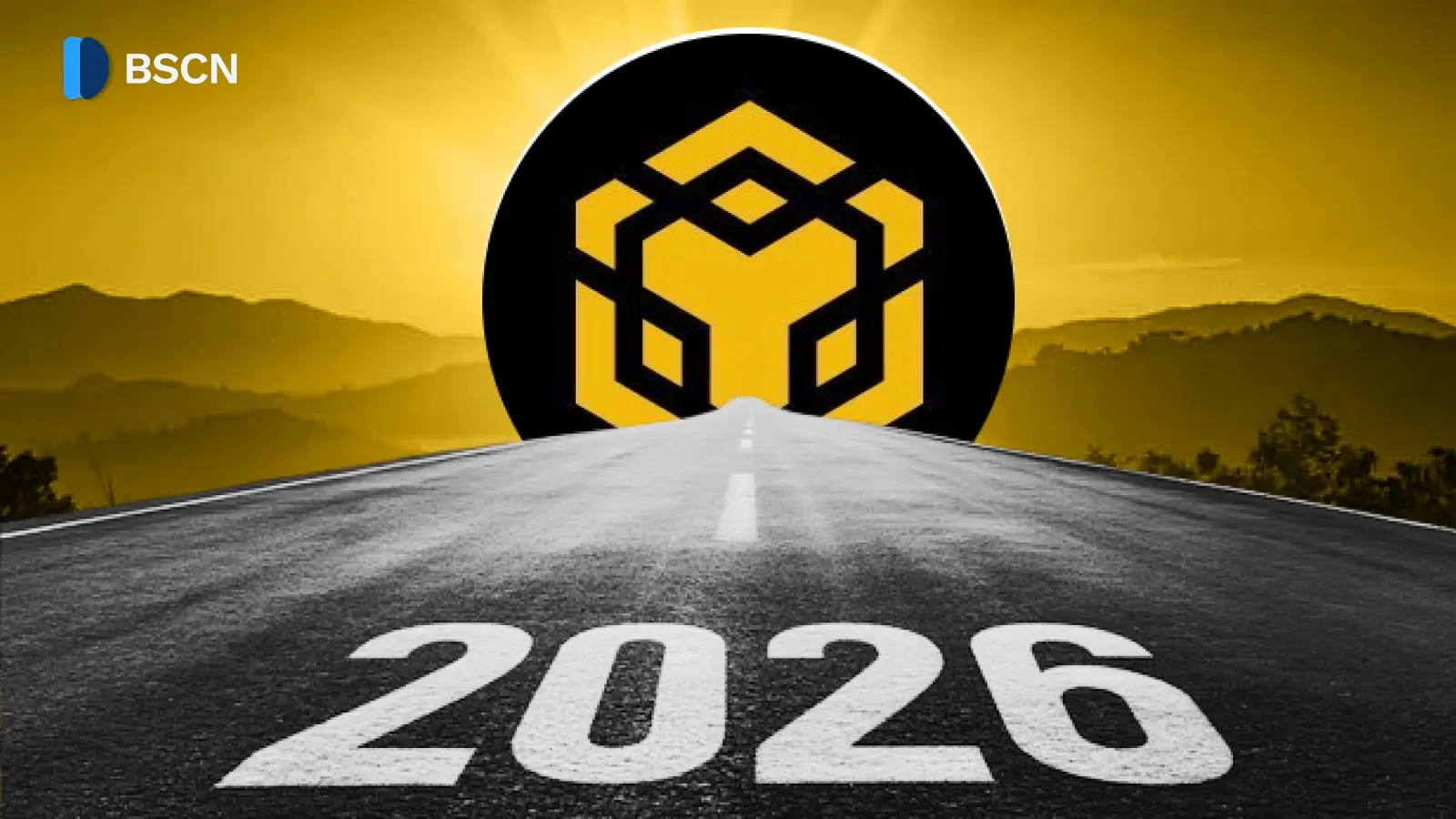Research
(Advertisement)
The Road Ahead for Kaspa: What Next for the Remainder of 2025 and Beyond?

Kaspa's blockchain evolves post-Crescendo hardfork: 10 blocks/second now, with DAGKnight consensus, ZK layers, reverse MEV, and oracles planned for 2025-2026 scalability.
UC Hope
August 13, 2025
(Advertisement)
Table of Contents
Kaspa holds a position in the blockchain industry as a proof-of-work Layer-1 network that distinguishes itself through the use of a blockDAG structure and the GHOSTDAG consensus protocol. The protocol allows for parallel block processing and high transaction throughput while maintaining security and decentralization.
Following the completion of its Crescendo hardfork, this article examines the protocol's plans for the remainder of the year and into 2026, including advancements in consensus mechanisms, layer-2 integrations, value extraction processes, and data attestation systems.
What is Kaspa?
Kaspa operates as a proof-of-work cryptocurrency based on the GHOSTDAG protocol, an extension of Nakamoto consensus. It employs a blockDAG structure that permits the creation of parallel blocks without designating any as orphans. This design supports high block rates and quick confirmation times.
Currently, the network handles up to 10 blocks per second, with future targets set at 32 and then 100 blocks per second. Confirmation times depend primarily on internet latency. Kaspa uses the kHeavyHash algorithm for its consensus and security processes, which is intended to consume less energy compared to other proof-of-work systems.
The network features include block pruning and SPV proofs, with planned support for subnetworks to aid layer-2 solutions. Launched fairly without pre-mining on November 7, 2021, Kaspa operates on platforms such as Windows, macOS, Linux, and Raspberry Pi, achieving a block time of 0.1 seconds.
A Trip Down Memory Lane: The Completion of Kaspa's Crescendo Hard Fork
Kaspa's Crescendo hard fork was activated on May 5, 2025, enhancing the project's scalability and efficiency. The update increased the block production rate from one to 10 blocks per second and integrated multiple Kaspa Improvement Proposals, designed to enhance transaction throughput.
Developer and community feedback following the event confirmed the successful implementation of the upgrade, establishing it as a foundation for further enhancements in security and decentralized finance functions. Lead developer Michael Sutton has cited this achievement in communications, highlighting its contribution to faster transaction handling.
What has happened since the Crescendo Hardfork?
Since the milestone event, the Kaspa network has maintained operations at 10 blocks per second, with community and development activities continuing. Community members organized live stream events to mark the activation.
In June, the community account @kaspaunchained shifted its approach, renaming and repositioning itself as a non-official platform to repost updates and amplify diverse voices, aiming to reduce centralization in communication. An event called the Kaspa Experience was announced for September 13, 2025, in Berlin, with a limited capacity of 500 tickets. The event features the real-world application of KAS for vendors, along with a product expo and a $10,000 grant.
Development efforts included the introduction of Kasia, a fully encrypted P2P messaging system built on the Kaspa protocol, led by @auzghosty. This open-source tool utilizes layer-1 transactions for messages, requiring a minimum of 10 KAS in a wallet to send over 500,000 messages, thereby leveraging the network's high block rate. In August, a proposal for verifiable programs (vProgs) emerged, describing self-governing smart contract modules with atomic cross-program transactions. Additionally, work began on an MCP server for AI agents to interact with Kaspa operations.
Kaspa's Core Developments Planned for 2025-2026
On July 25, 2025, Kaspa published specifics on its research and development focus for 2025-2026, prioritizing advancements in scalability, security, and decentralized application support. These build on the Crescendo foundation and are in active research, with some slated for integration into the Rusty Kaspa repository soon. The efforts address high-throughput needs, particularly for smart contracts and Layer 2 setups.

DAGKnight Protocol in Kaspa's Pipeline
The DAGKnight protocol is an evolution of Kaspa's GHOSTDAG consensus. It seeks to accelerate transaction ordering convergence by eliminating fixed network delay assumptions, thereby bolstering defense against attacks. Based on a 2022 research paper, its phases cover efficient algorithms and simplifications, with expected rollout in the next hard fork.
ZK Layer and L1-to-L2 Bridge Development
Kaspa advances zero-knowledge rollup support via a ZK layer featuring an L1-to-L2 bridge. Here, layer-1 oversees sequencing, data availability, and settlement for layer-2. The bridge allows atomic composability across rollups, with research on synchronous multi-rollup transactions. Zero-knowledge rollup functions are planned for late 2025 or early 2026, utilizing subnetwork backing for Layer 2.
Reverse MEV Auctions on Kaspa
Reverse Miner Extractable Value (MEV) auctions aim to mitigate MEV by allowing miners to offer user kickbacks for transaction ordering or inclusion rights. This reduces exploitation and shifts value to users through Kaspa's parallel blocks. Layer-1 modifications, like canonical kickback paths and auction rules, are proposed for the next hard fork.
Oracle Voting Mechanism for Kaspa
The oracle voting mechanism provides a layer-1 system for miners to verify external data, such as prices or events, in real-time. It employs the high blocks-per-second rate for sybil-resistant oracles, embedding miner votes in consensus for security. This tackles decentralized finance oracle weaknesses.
Why these Upcoming Developments matter?
These developments address specific technical challenges in blockchain operations. The DAGKnight protocol enhances consensus resilience, reducing risks in high-speed environments where transaction ordering must converge quickly without delay bounds. The ZK layer and bridge support layer-2 scaling, enabling data availability and settlement on layer-1 while allowing atomic transactions across rollups, which aids in managing increased DeFi activity.
Reverse MEV auctions modify value extraction dynamics, using kickbacks to limit miner advantages and promote user benefits in a parallel block system. The oracle voting mechanism integrates external data attestation directly into consensus, leveraging the 10 blocks-per-second rate to create secure, real-time oracles resistant to manipulation, which supports reliable DeFi operations.
In the meantime, they align with Kaspa's emphasis on a scalable, MEV-resistant blockchain with built-in oracles.
Resources:
- Kaspa Community Website: http://kaspa.org
- Kaspa Community X Account: http://x.com/@kaspaunchained
- Kaspa Development Milestones: https://kaspa.org/kaspa-development-milestones-revealed-2025/
- Kaspa Developer Resources: https://kaspa.org/developers-resourses/
Read Next...
Frequently Asked Questions
What was the Crescendo hard fork on Kaspa?
The Crescendo hard fork, completed on May 5, 2025, increased Kaspa's block rate to 10 per second.
What is DAGKnight in Kaspa?
DAGKnight is an upgrade to Kaspa's consensus, improving transaction ordering speed and attack resistance, planned for the next hard fork.
When will Kaspa's ZK layer be ready?
Kaspa's ZK layer, which enables zero-knowledge rollups and L1-L2 bridging, is targeted for release in late 2025 or early 2026.
Disclaimer
Disclaimer: The views expressed in this article do not necessarily represent the views of BSCN. The information provided in this article is for educational and entertainment purposes only and should not be construed as investment advice, or advice of any kind. BSCN assumes no responsibility for any investment decisions made based on the information provided in this article. If you believe that the article should be amended, please reach out to the BSCN team by emailing [email protected].
Author
 UC Hope
UC HopeUC holds a bachelor’s degree in Physics and has been a crypto researcher since 2020. UC was a professional writer before entering the cryptocurrency industry, but was drawn to blockchain technology by its high potential. UC has written for the likes of Cryptopolitan, as well as BSCN. He has a wide area of expertise, covering centralized and decentralized finance, as well as altcoins.
(Advertisement)
Latest News
(Advertisement)
Crypto Project & Token Reviews
Project & Token Reviews
Comprehensive reviews of crypto's most interesting projects and assets
Learn about the hottest projects & tokens

















